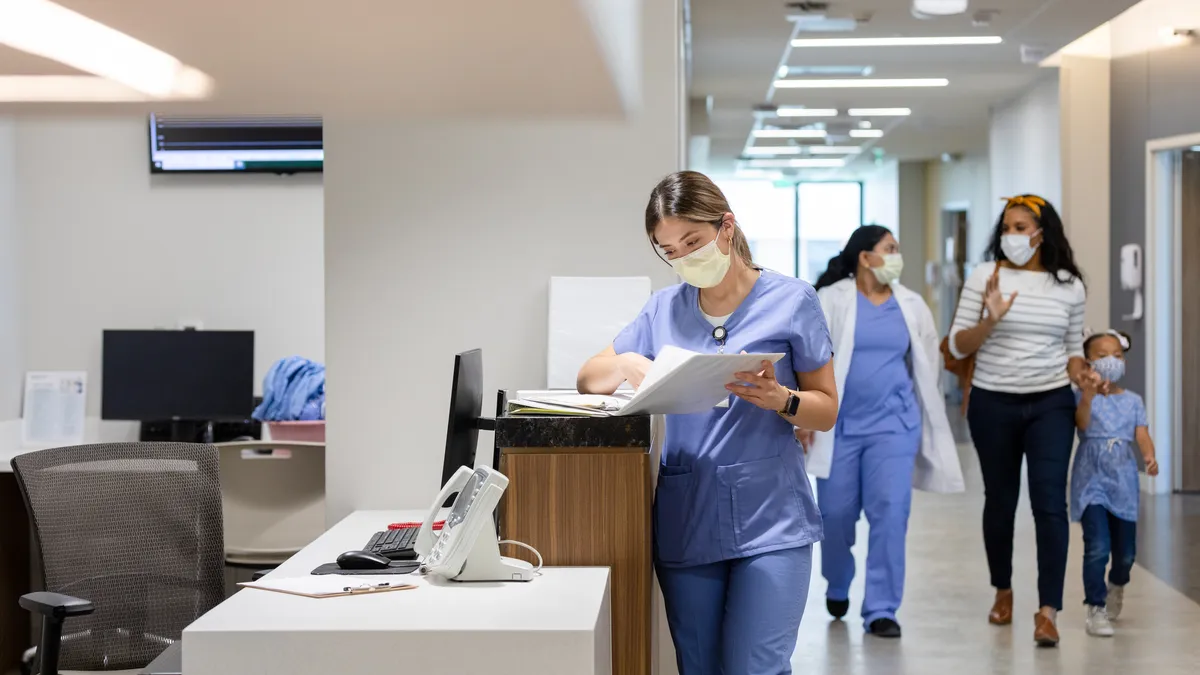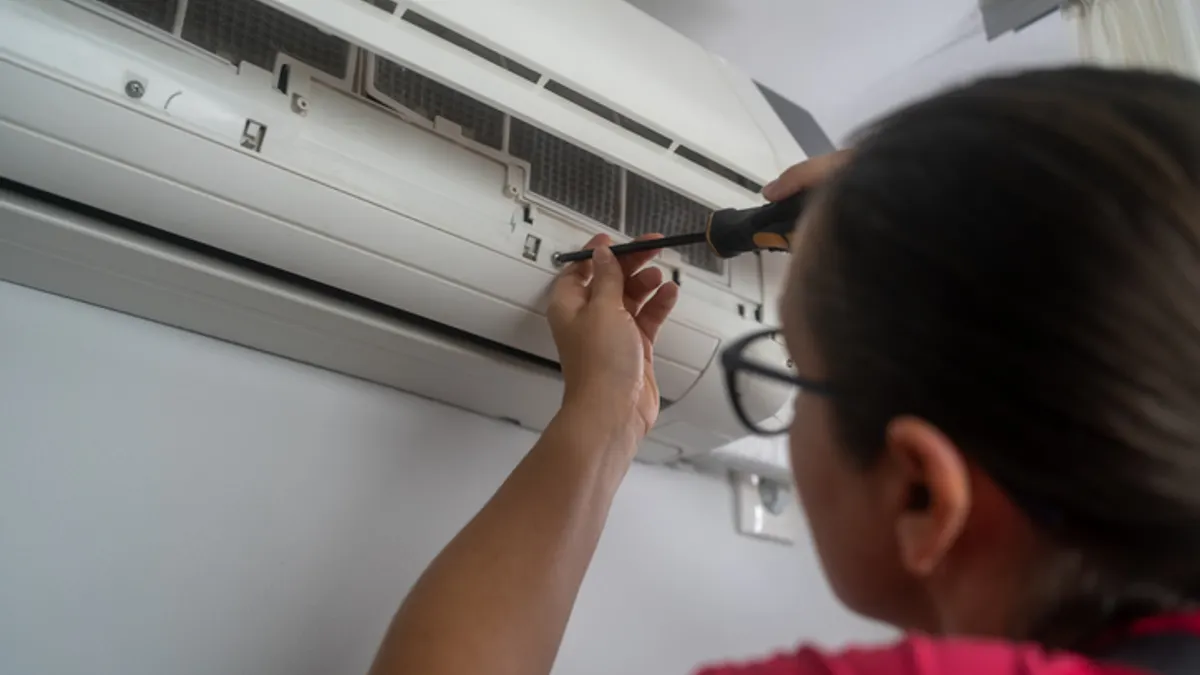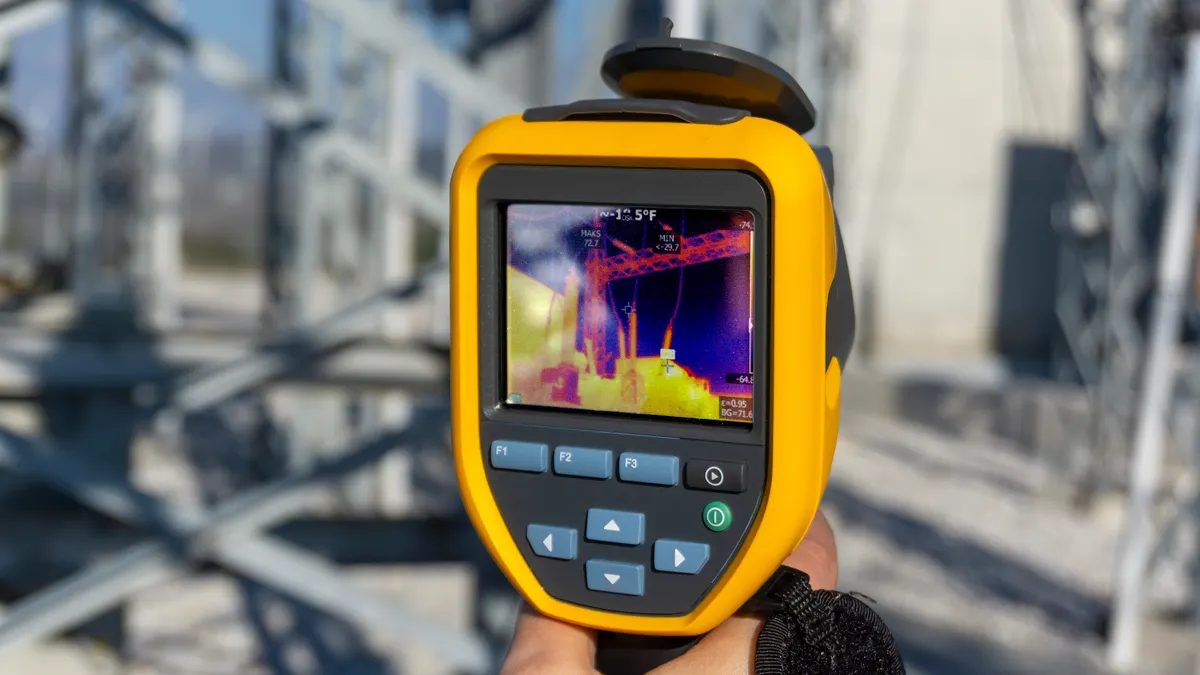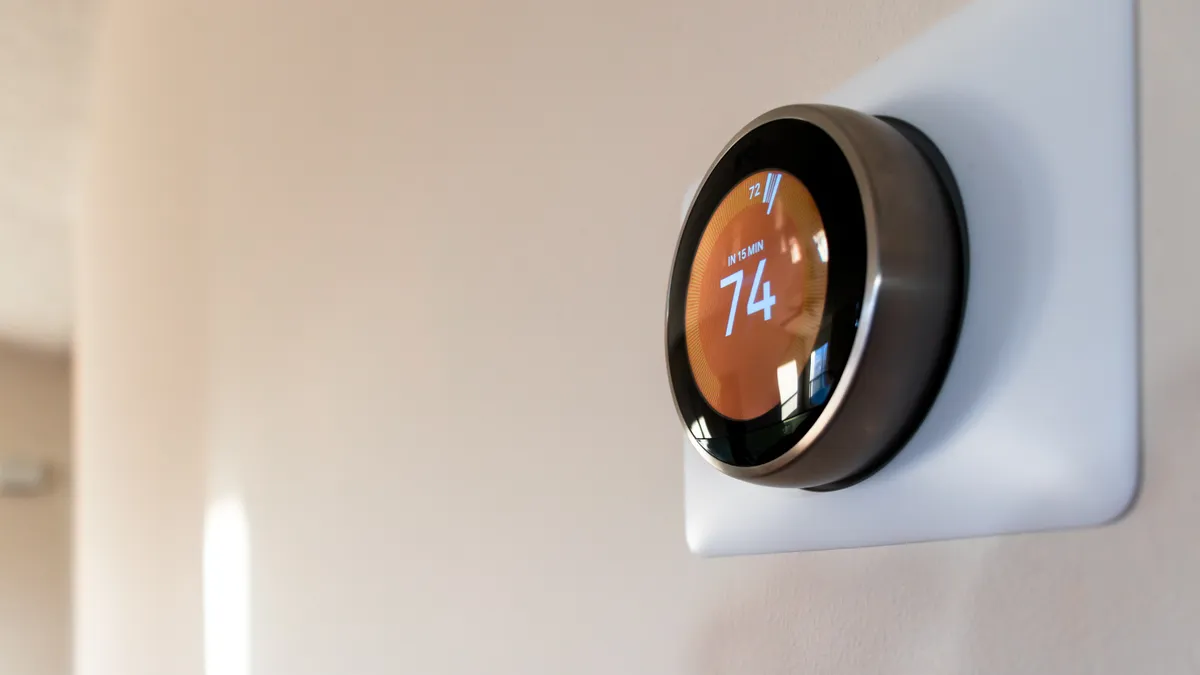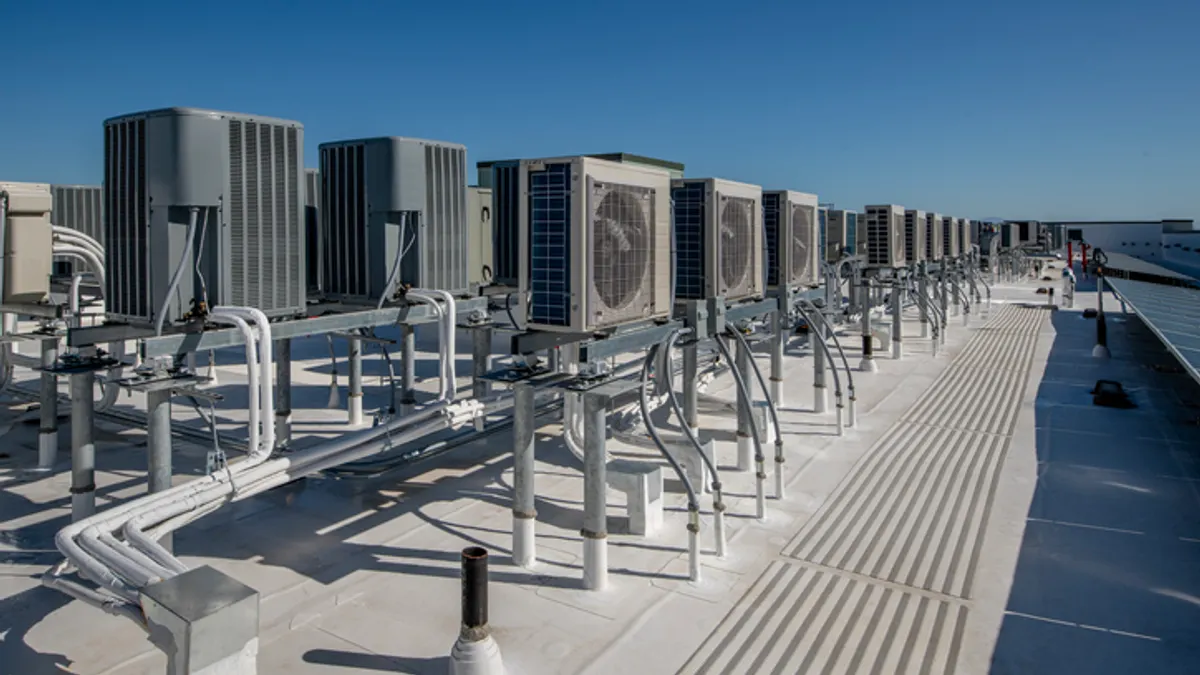This article is the first in a three-part series about trends, challenges, and opportunities for facilities managers in hospitals and outpatient care clinics.
A hospital or healthcare clinic often evokes a spectrum of images, from fluorescent lights and cold linoleum floors to poker-faced doctors and frazzled caregivers sipping stale coffee from styrofoam cups in waiting lounges.
That stereotype differs from the reality of a healthcare sector on the cusp of transformation, even as it limps along the road to post-pandemic recovery. Healthcare facilities are at the forefront of that transformation with a goal of enhancing outcomes and experiences for both clinical care teams and patients.
That involves tasks ranging from preventing the failure of an air-conditioning unit in the middle of a critical 10-hour brain surgery to overseeing the maintenance of a hospital gift shop where guests can purchase comfort items after procedures.
But facilities managers in hospitals and outpatient care clinics are facing a double whammy— constrained access to capital, exacerbated by increased costs, and pressures to incorporate sustainability into their maintenance work, repairs, upgrades, replacements, remodelings and construction projects.
Constrained access to capital
Healthcare expenditures have increased due to growing patient volumes, driven by a rising geriatric population and a higher prevalence of chronic diseases. The Centers for Medicare and Medicaid Services expects U.S. health spending to jump nearly 64%, to $7.2 trillion, in 2031, from $4.4 trillion in 2022, with an anticipated growth of 5.4% per year on average, according to a recent study published in Health Affairs.
The spike in healthcare costs reflects a rise in patient numbers, which is accelerating the need for more investments in healthcare infrastructure and materials required for construction, renovations, equipment upgrades and replacements. But capital is not always being funneled to facilities management teams “because facilities don’t generate revenue, although we support the infrastructure, which generates that revenue,” said Andy Woommavovah, system leader for facilities and construction at Trinity Health, which has 92 hospitals and 106 continuing care locations.
“What we’re challenged to do is build a business case to justify that funding, [as] our healthcare leadership teams like to see a 24-month to 36-month ROI on projects,” Woommavovah added.
The Inflation Reduction Act provides funding mechanisms for not-for-profit healthcare across multiple categories, including energy efficiency initiatives. Woommavovah is leading a number of projects that he hopes will be eligible for that funding.
“When we overlay the additional incentives that come in through the IRA, [that] ROI decreases, which makes it more attractive to our financial leadership to prioritize capital to fund those projects,” he said in an interview.
Some of the funding challenges can be effectively addressed if healthcare facilities managers are given “a seat at the table” earlier in the planning, design and construction process.

Alison Flynn Gaffney
President of healthcare at JLL
Hospital margins have remained depressed relative to pre-pandemic levels. Last year, losses amounted to billions of dollars, amid an estimated increase of nearly $135 billion in expenses from 2021 levels, according to an analysis of more than 900 hospitals conducted by Kaufman, Hall & Associates.
Individual healthcare units and smaller community hospitals are bearing the brunt of those financial challenges. Such outposts often lack access to capital and must prioritize life safety projects, Alison Flynn Gaffney, president of the healthcare division at JLL, said in an interview.
“Planning for and balancing financial constraints with [the] need to invest is top of mind for every C-suite and healthcare leader,” she said. “The challenge is to have enough funds.”
Gaffney believes some of the funding challenges can be effectively addressed if healthcare facilities managers are given “a seat at the table” earlier in the planning, design and construction process. The COVID-19 pandemic galvanized more mature healthcare systems to involve facilities leads in that process, but that approach still has to catch up in smaller units, she said.
“That’s critical for the long-term success of projects … since [facilities managers] can contribute to what an organization needs,” she said.
Robert Melton, a corporate engineer and director for Cape Fear Valley Health Systems, thinks the healthcare sector is not far behind other sectors in terms of access to capital. “Healthcare is a business. You have to conduct a building facility assessment so that you can determine your budget allocation and develop your capital plan accordingly,” said Melton, who manages a team of 75 facilities workers across nine hospitals, outpatient clinics and behavioral health outposts in North Carolina.
Emissions reduction pressures
In addition to capital constraints, facilities managers are facing pressures to incorporate decarbonization goals into their existing budgets. Healthcare units account for roughly 8.5% of all U.S. greenhouse gas emissions, generated mostly by energy-draining apparatus that run around the clock. A cocktail of pharmaceutical products, medical devices, food items and gases used in anesthesia also contributes to the total.
“It’s hard to figure out how sustainability connects with patient safety. We’re already contending with low margins, so we have to be particular about where we choose to spend our dollars.”

Andy Woommavovah
System leader for facilities and construction at Trinity Health
A Health Sector Climate Pledge, launched by the U.S. Department of Health and Human Services in March 2023, encourages hospitals to commit to slashing 50% of their greenhouse gas emissions by 2030. That same month, the Joint Commission, a healthcare research and standard-setting organization, which is developing new requirements to improve patient safety by addressing environmental sustainability for Hospital and Critical Access Hospital accreditation programs, said healthcare organizations can no longer overlook their impact on greenhouse gas emissions. The comment period that followed saw pushback from healthcare organizations that viewed the commission’s proposed requirements as an unfunded mandate they were being coerced to achieve.
“The mandate is going to be hard for us,” Woommavovah said. “It’s hard to figure out how sustainability connects with patient safety. We’re already contending with low margins, so we have to be particular about where we choose to spend our dollars.”
Woommavovah noted that healthcare institutions participating in the HHS pledge are required to clearly state their goals. He said they cannot accomplish this without proper carbon accounting, which requires an understanding of what institutions' carbon footprints look like.
“Large systems will have a challenge doing that,” he said. “You have to categorize whether all the entities in your footprint fall within Scope 1 and Scope 2, or within Scope 3 emissions. And you need a lot of expertise for that.”
Woommavovah recommends that hospitals engage third parties who can train their facilities teams on greenhouse gas accounting.
"A CAT machine that’s 20 years old has a different energy profile from one that’s brand new. Right now, the ROI on upgrading those machines is not obvious because the approach has been one of using those machines until they break."

Arvin Vohra
CEO, Redaptive
Arvin Vohra, CEO of Redaptive, an energy-as-a-service provider, believes that new opportunities can emerge from a combination of tightened budgets, interest rate hikes and capital cost increases.
“There is access to sustainability-oriented capital from third-party energy-as-a-service firms, as well as tech and service firms that can fund upgrades,” he pointed out. Redaptive recently launched a digital platform that it says will halve customers’ reporting costs and generate up to 15% in utility expense savings. The company pays for upgrades and charges customers out of their savings.
An additional challenge is that many hospitals are saddled with aging medical equipment. Older equipment typically consumes more energy, which does little to assist with emissions reduction objectives. A team at Redaptive, which says healthcare organizations account for roughly a third of its clientele, once observed that the energy demand of a pair of old dialysis machines they measured at an outpatient clinic was significantly higher than newer dialysis paraphernalia, for example.
“It’s that level of insight that can facilitate informed decisions,” Vohra said. “A CAT machine that’s 20 years old has a different energy profile from one that’s brand new, and we’re able to see that. Right now, the ROI on upgrading those machines is not obvious because the approach has been one of using those machines until they break. But what we can do is provide insight into the potential a new machine has to reduce carbon emissions.”
Viewing these scenarios through a bigger-picture lens can set the stage for a more sustainable and patient-centric healthcare environment.



